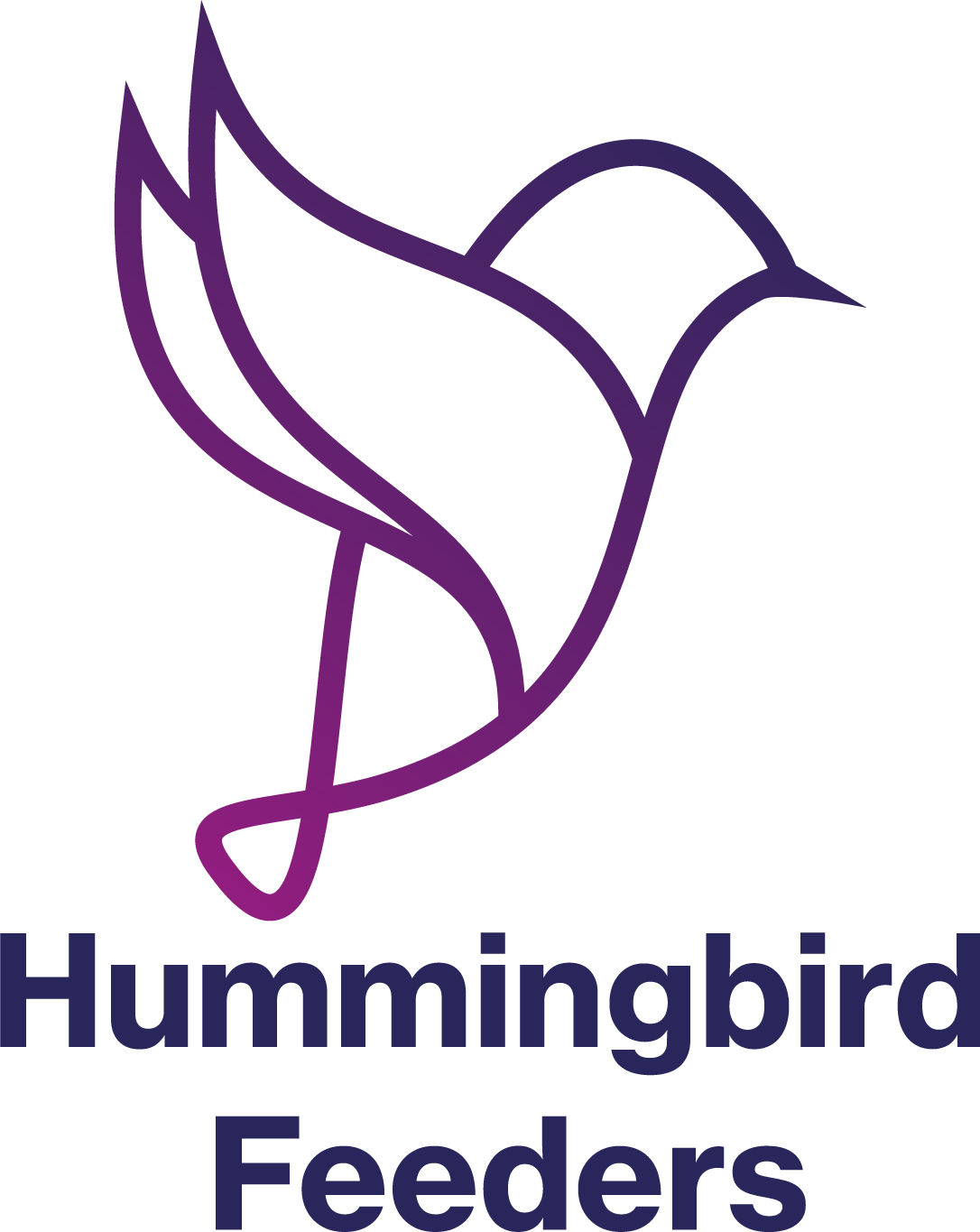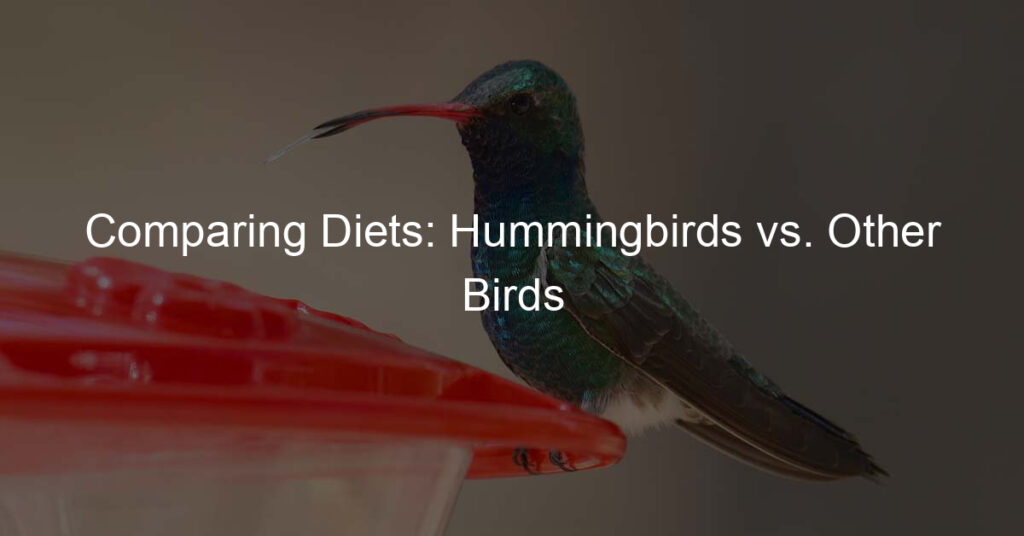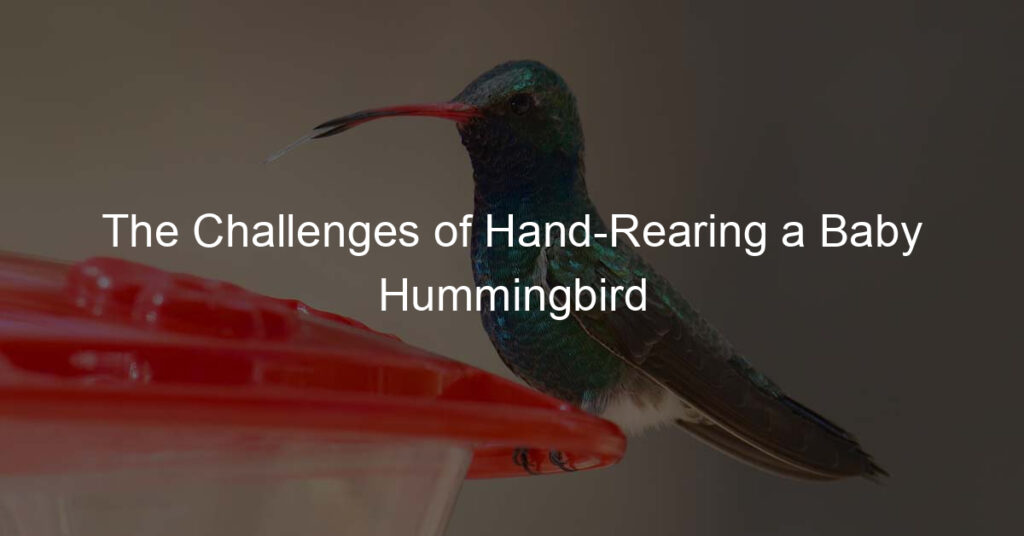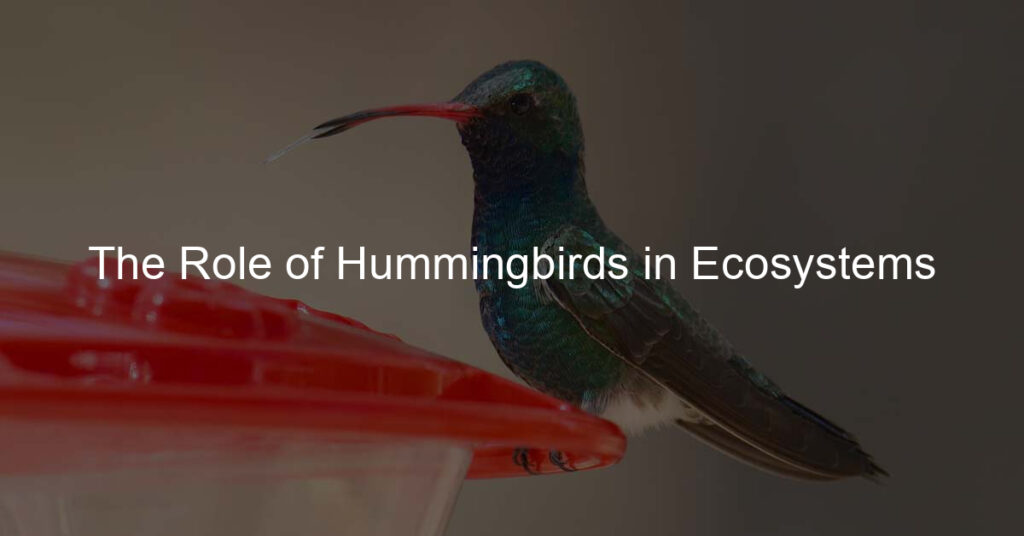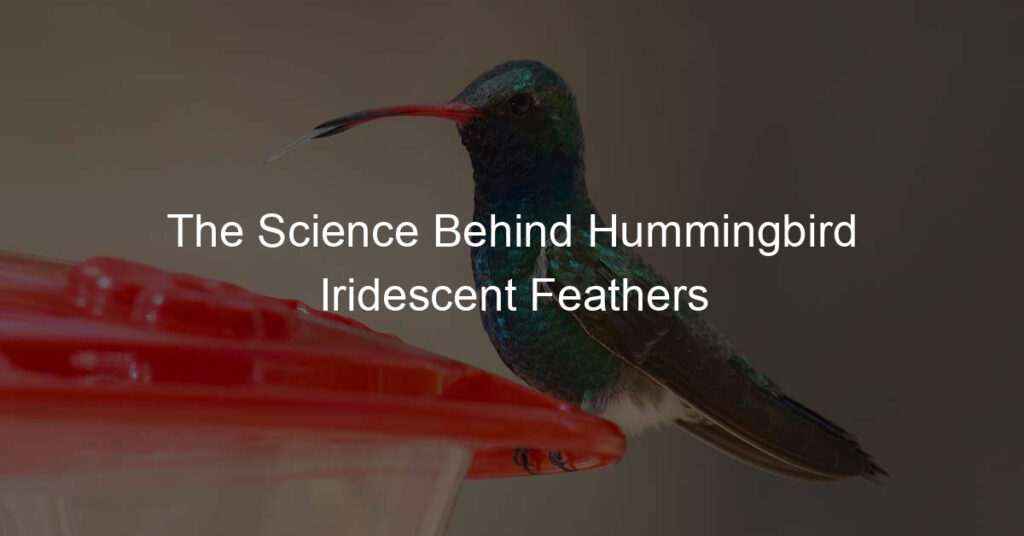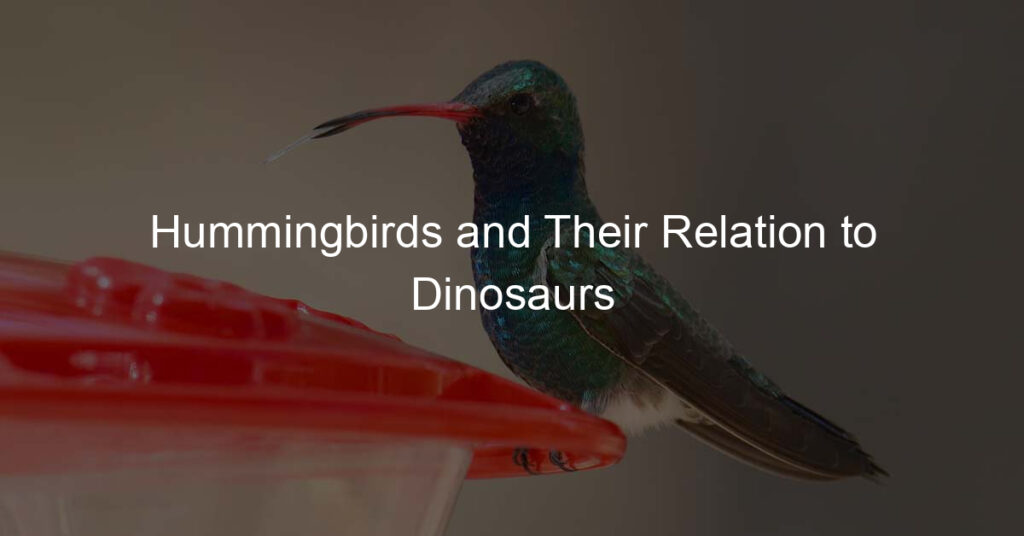Introduction: Hummingbirds and Their Importance
Hummingbirds, with their vibrant colors and rapid wing beats, are a fascinating sight to behold. But beyond their beauty, these tiny birds play a crucial role in our ecosystem. In this blog post, we will delve into the world of hummingbirds and explore their significance in our environment.
Overview of Hummingbirds
Hummingbirds are small birds known for their extraordinary flying abilities. They are the only birds that can fly backwards and hover in mid-air, thanks to their rapid wing-flapping speed. There are over 300 species of hummingbirds, most of which are found in Central and South America. They are named ‘hummingbirds’ because of the humming sound created by their beating wings, which flap at high frequencies audible to humans. They are also known for their bright iridescent colors and long, slender beaks. Learn more about hummingbirds here.
Role of Hummingbirds in the Ecosystem
Hummingbirds play a vital role in the ecosystem. They are primary pollinators for many types of flowers. As they move from flower to flower in search of nectar, pollen sticks to their beaks and feathers, which then gets transferred to other flowers, aiding in their fertilization. This process is crucial for the reproduction of many plant species.
Furthermore, hummingbirds also help control insect populations. They consume a large number of insects each day for protein, which helps keep the insect population in check. Their role as both pollinators and insect predators makes them an essential part of the ecosystem. Click here to read more about the role of hummingbirds in the ecosystem.
In the following sections, we will discuss the threats faced by these incredible creatures, specifically focusing on the impact of pesticides, and what we can do to protect them.
The Threat: Pesticides
One of the major threats to our beautiful hummingbirds, and indeed to many forms of wildlife, comes in the form of pesticides. But what exactly are pesticides, and why are they so harmful?
Definition of Pesticides
Pesticides are substances used to prevent, destroy, repel, or mitigate any pest ranging from insects, animals, and weeds, to microorganisms such as fungi, molds, bacteria, and viruses. They are often used in agriculture and gardening to protect plants and crops. However, their use can have unintended consequences on non-target species, including beneficial insects, birds, and mammals. For more detailed information, you can visit the Wikipedia page on pesticides.
Common Types of Pesticides Used in Gardens
There are several types of pesticides commonly used in gardens. These include:
Insecticides: These are designed to kill insects. They can be particularly harmful to hummingbirds as they eliminate their primary food source.
Herbicides: These are used to kill unwanted plants or weeds. They can contaminate the nectar that hummingbirds feed on.
Fungicides: These are used to kill fungi that can damage plants. They can also affect the quality of the nectar that hummingbirds consume.
Rodenticides: These are used to kill rodents. They can indirectly affect hummingbirds if they consume insects that have ingested the poison.
It’s important to note that all these types of pesticides can have a negative impact on the environment and non-target species when not used responsibly. For more information on the different types of pesticides, you can check out the Wikipedia page on types of pesticides.
Garden Pesticides and Their Impact
When we use pesticides in our gardens, we might think we’re only targeting harmful pests. However, these chemicals can have far-reaching impacts that we don’t always see. Let’s explore how garden pesticides enter the food chain and their effects on non-target species.
How Garden Pesticides Enter the Food Chain
Pesticides used in gardens don’t stay put. They can be carried away by wind, rain, and irrigation water, or absorbed by plants and soil. When insects, birds, and other animals come into contact with these pesticides, they can ingest them or carry them to other areas.
For example, a bee might collect pesticide-laden pollen from a flower and bring it back to the hive. This not only exposes the entire hive to the pesticide but also contaminates the honey they produce. This is one way pesticides can enter the food chain and potentially reach our dinner tables.
According to a Wikipedia article, pesticides can also accumulate in the bodies of small animals and insects, which are then eaten by larger animals, causing the pesticides to move up the food chain.
Impact of Garden Pesticides on Non-Target Species
Non-target species are those that the pesticides are not intended to harm. These can include beneficial insects, birds, fish, and even humans. Unfortunately, many pesticides are not selective and can harm or kill non-target species.
For instance, pesticides can harm beneficial insects like bees, which play a crucial role in pollination. A Wikipedia article states that some pesticides can cause a decline in bee populations, which can have a significant impact on our food supply.
Furthermore, birds that eat insects or seeds treated with pesticides can become sick or die. Pesticides can also contaminate water sources, harming fish and other aquatic life.
In conclusion, while garden pesticides can help control pests, they can also have unintended consequences. It’s important to use them responsibly and consider alternative pest control methods to protect our environment and food chain.
Effects of Pesticides on Hummingbirds
Hummingbirds, with their vibrant colors and rapid wing movements, are a joy to observe. However, these tiny creatures are facing significant challenges due to the widespread use of pesticides. Let’s delve into the direct and indirect effects of pesticides on hummingbirds.
Direct effects of pesticide exposure on hummingbirds
Pesticides, when sprayed on plants, can contaminate the nectar that hummingbirds feed on. This direct exposure can lead to immediate health issues in hummingbirds. For instance, exposure to certain pesticides can cause a decline in their motor skills, making it difficult for them to fly or feed. In some severe cases, it can even lead to their death.
Indirect effects of pesticides on hummingbird health
Indirect exposure to pesticides can also have detrimental effects on hummingbirds. Pesticides can eliminate insects, a crucial protein source for hummingbirds, especially during the breeding season. This can lead to malnutrition and reduced breeding success. Furthermore, pesticides can contaminate water sources, affecting the overall habitat quality for hummingbirds.
It’s important to note that the effects of pesticides on hummingbirds can vary depending on the type of pesticide, the concentration, and the duration of exposure. However, the cumulative impact can be devastating for these tiny birds and the ecosystems they inhabit.
Understanding these effects is the first step towards protecting hummingbirds and ensuring their survival for future generations to enjoy. In the next section, we will explore the environmental impact of pesticides and discuss ways to protect hummingbirds from these harmful chemicals.
Case Study: Pesticide Pollution and Hummingbird Species
Let’s dive into a specific case study to better understand the impact of pesticide pollution on hummingbirds. We’ll look at two key areas: the effects on specific hummingbird species and their current conservation status.
Impact of Pesticide Pollution on Specific Hummingbird Species
Hummingbirds, like the Ruby-throated and Anna’s hummingbirds, are particularly vulnerable to pesticide pollution. These tiny birds feed on nectar from flowers, which can be contaminated with pesticides used in gardens and farms.
According to a study, pesticides can cause a range of health problems in hummingbirds. These include reduced fertility, impaired growth, and even death. For example, the Ruby-throated hummingbird population has seen a significant decline in recent years due to pesticide exposure.
Conservation Status of Affected Hummingbird Species
The conservation status of many hummingbird species is concerning. The International Union for Conservation of Nature (IUCN) has listed several hummingbird species as vulnerable or endangered. This is largely due to habitat loss and pesticide pollution.
For instance, the Ruby-throated hummingbird is now considered ‘Near Threatened’. The Anna’s hummingbird, on the other hand, is still ‘Least Concern’, but its population is decreasing. This shows the urgent need for action to protect these beautiful creatures.
In conclusion, pesticide pollution has a significant impact on hummingbird species. It not only affects their health but also threatens their survival. Therefore, it’s crucial to reduce pesticide use and protect the habitats of these birds.
| Hummingbird Species | Impact of Pesticide Pollution | Conservation Status |
|---|---|---|
| Ruby-throated Hummingbird | Significant decline due to pesticide exposure | Near Threatened |
| Anna’s Hummingbird | Population decreasing | Least Concern |
Environmental Impact of Pesticides
Pesticides, while beneficial for controlling pests, can have a significant impact on our environment. Let’s explore two key areas: the effects on biodiversity and the long-term environmental impact of pesticide use.
Effects of Pesticides on Biodiversity
Biodiversity, or the variety of life in a particular habitat, is crucial for a healthy ecosystem. Pesticides, however, can disrupt this balance. When used indiscriminately, pesticides can harm or kill non-target species, including beneficial insects, birds, and aquatic life. This can lead to a decrease in biodiversity, which in turn affects ecosystem stability and resilience. For example, a study found that certain pesticides are highly toxic to bees, which are important pollinators. The decline in bee populations can have a ripple effect on the entire ecosystem, affecting the growth of plants and the animals that rely on them for food.
Long-term Environmental Impact of Pesticide Use
The long-term environmental impact of pesticide use is another area of concern. Pesticides can persist in the environment for years, contaminating soil, water, and air. They can also bioaccumulate in organisms, leading to higher concentrations of the pesticide in predators at the top of the food chain. This can have devastating effects on wildlife populations. For instance, the pesticide DDT, though banned in many countries, can still be found in the environment and continues to affect bird populations by causing eggshell thinning. This information from Wikipedia provides more details on the long-term effects of DDT.
In conclusion, while pesticides can be useful tools in pest management, it is crucial to consider their environmental impact. By understanding these effects, we can make more informed decisions about pesticide use and work towards more sustainable practices.
Pesticide Exposure in Birds: A Wider Perspective
While our focus is primarily on hummingbirds, it’s crucial to understand that the impact of pesticides extends to a wide variety of bird species. This broader perspective allows us to see the full scope of the problem and why it’s so important to address.
Effects of pesticides on other bird species
Many bird species, not just hummingbirds, are affected by pesticide exposure. For instance, studies have shown that pesticides can cause a decline in the population of sparrows, eagles, and owls. Pesticides can affect birds’ reproductive systems, leading to fewer eggs being laid and a higher rate of egg and chick mortality. They can also cause neurological problems, leading to changes in birds’ behavior and ability to find food and avoid predators.
Comparative study: hummingbirds vs. other bird species
When comparing the effects of pesticides on hummingbirds to other bird species, there are some notable differences. Hummingbirds, due to their small size and fast metabolism, are particularly vulnerable to pesticides. They consume large amounts of nectar, which can be contaminated with pesticides, leading to high levels of exposure. However, larger birds like eagles and hawks can also be affected, especially by pesticides that accumulate in the food chain. For example, the pesticide DDT, before it was banned, caused significant declines in birds of prey due to eggshell thinning.
In conclusion, while hummingbirds are particularly vulnerable to pesticides, many other bird species are also affected. This highlights the need for a comprehensive approach to reducing pesticide use and protecting our bird populations.
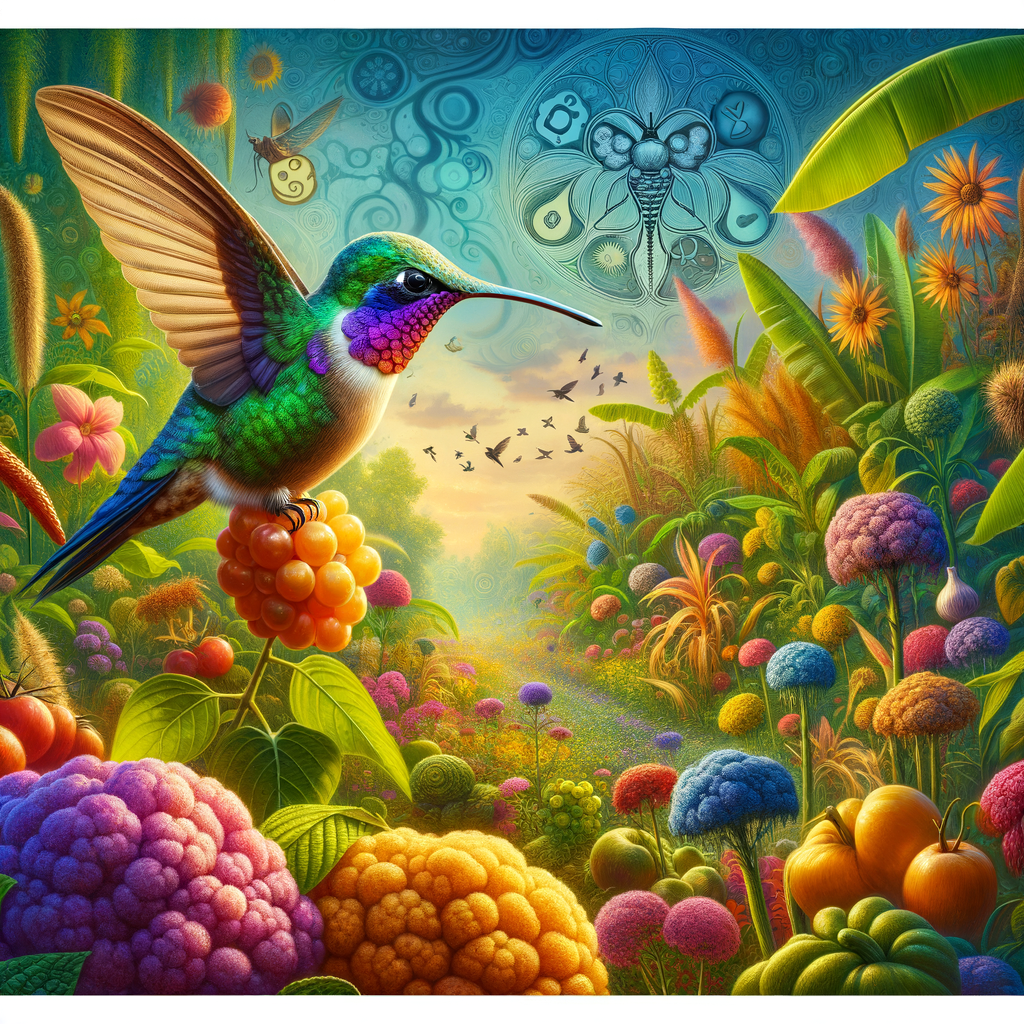
Conclusion: Protecting Hummingbirds from Pesticides
As we draw to a close, it’s clear that we all have a role to play in protecting hummingbirds from the harmful effects of pesticides. By making a few changes in our gardening practices, we can create a safer environment for these beautiful creatures. Let’s explore some practical steps we can take.
Steps to reduce pesticide use in gardens
Reducing pesticide use in our gardens is a crucial first step. We can achieve this by:
Planting native plants: Native plants are more resistant to pests and require fewer pesticides. They also provide a natural food source for hummingbirds.
Using organic mulch: Organic mulch like compost or shredded leaves can help control pests and reduce the need for pesticides.
Handpicking pests: While it may be time-consuming, handpicking pests is an effective and pesticide-free method of pest control.
Alternative pest control methods
There are several alternatives to pesticides that are safe for hummingbirds. These include:
Biological control: This involves using natural enemies of pests, like ladybugs and spiders, to control pest populations.
Physical barriers: Netting, copper tape, and other physical barriers can keep pests away from plants.
Homemade sprays: Sprays made from ingredients like garlic, chili pepper, and vinegar can deter pests.
In conclusion, protecting hummingbirds from pesticides is not just about reducing our use of these chemicals. It’s also about adopting alternative pest control methods and creating a garden that supports the natural ecosystem. By taking these steps, we can help ensure the survival of hummingbirds for generations to come.
Key Takeaways: Ensuring Hummingbird Health
Importance of reducing pesticide use for hummingbird conservation
One of the most significant steps we can take to ensure the health and survival of hummingbirds is to reduce our use of pesticides. These chemicals, often used in gardens and farms to control pests, can have a devastating impact on hummingbirds. They can contaminate the nectar that hummingbirds feed on, leading to poisoning and even death. According to a Wikipedia article, many species of hummingbirds are now threatened due to habitat loss and pesticide exposure. By reducing our reliance on these harmful chemicals, we can help protect these beautiful creatures and ensure their survival for future generations.
Role of individual actions in protecting hummingbirds
Each one of us can play a crucial role in protecting hummingbirds. Simple actions such as planting native flowers, providing clean feeders, and reducing our use of pesticides can make a big difference. For example, instead of using chemical pesticides, we can opt for natural pest control methods like introducing beneficial insects or using homemade sprays made from natural ingredients. By taking these steps, we not only protect hummingbirds but also contribute to a healthier and more sustainable environment. Remember, every action counts when it comes to conservation.
